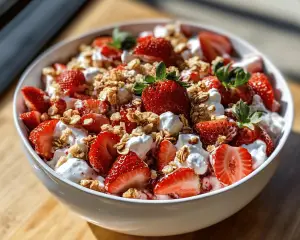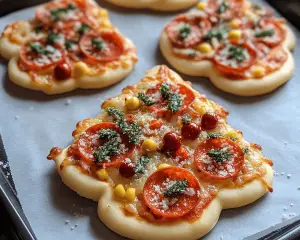When I think of German pancakes, I’m transported back to a sunlit kitchen in my childhood home on crisp autumn mornings. The air was infused with a warm, buttery aroma that blended perfectly with a sprinkle of cinnamon. These pancakes had a magic about them—a soft, billowy texture that cradled all the sweet toppings like a tender hug. It was a Saturday ritual, one that united my family over the dining table, an unexpected adventure that transformed an ordinary weekend into a beautiful memory.
Those first few times I attempted to make German pancakes, however, were awkward and clumsy. I remember whisking eggs vigorously, their golden yolks swirling into a frothy pool, and pouring the batter into the hot cast-iron skillet, only to watch it resemble a wobbly, oversized souffle. Would it rise? Would it fall? That element of surprise was part of the fun—there’s something poetic about watching food transform in the heat. When that generous puff emerged from the oven, golden brown and puffed like a cloud, I felt a jubilant rush. Although it rarely looked as perfect as the Pinterest photos, there was a homely charm to its wonky edges and slightly uneven rise.
The origins of German pancakes can be traced to a tradition of simple, hearty cooking—a legacy passed down through generations. It’s said that the dish’s German roots are closely tied to the Dutch Baby pancake, which finds its way onto tables in many households, especially in the autumn months when apples are ripe for the picking. With their buttery edges that caramelize in the oven, these pancakes aren’t just food; they’re a celebration.
As the years rolled on, my relationship with these pancakes matured. They became more than a childhood delight; they morphed into a symbol of connection. I began experimenting, introducing flavors that mirrored my life—a hint of vanilla, a touch of nutmeg, and perhaps even a dollop of fresh berries, each ingredient adding another layer to their narrative. On a blustery winter morning, when snow blanketed the streets outside, I’d top them with rich apple compote made from our garden’s autumn bounty, reminding me of the vivid life each season brings.
It wasn’t merely an indulgent breakfast; it became a ritual of self-care and creativity, especially during the quieter phases of my life. The process of preparing it became meditative—cracking the eggs, whisking, feeling the texture of the batter with my fingertips. It grounded me amid a world full of chaos, allowing me to breathe and reflect while waiting for those pancakes to rise.
Inside the Ingredients of German Pancakes
Let’s delve into the star players of this dish, ingredient by ingredient, as they each carry unique significance.
Eggs: At the heart of any pancake is, of course, the egg. A source of protein and nourishment, a good egg gives German pancakes their characteristic rise and fluffiness. Think of eggs as the glue that binds all these beautiful flavors together. I remember once using farm-fresh eggs—those vibrant yolks created a color that was so rich that the end result felt almost like a work of art. Sourcing eggs from local farms not only supports your community but also brings a level of freshness that supermarket eggs simply can’t match.
Flour: The foundation of any good pancake. I prefer unbleached all-purpose flour, a reminder of simpler times. It adds a nice structure without weighing it down. However, experimenting with whole wheat or gluten-free flour alternatives can lead to delightful results too. Each variation spins a new tale in the traditional narrative, making it accessible for everyone.
Milk: Whether you choose whole, almond, or even oat milk, this ingredient offers moisture and a mild sweetness that balances the richness of the other components. The milk brings comfort, reminiscent of cozy evenings by the fireplace, and allows the flavors to dance playfully. Make sure it’s at room temperature—trust me, you don’t want cold milk interrupting the warm harmony!
Butter: Ah, butter—the hero of breakfast. Not only does it add a luxurious flavor, but it creates that lovely crispy exterior when the pancakes come out of the oven. I always opt for unsalted butter, letting me control the final seasoning precisely. The smell of melted butter as it mingles with the batter is my happy place, a gentle reminder to slow down and savor life.
Sugar: A touch of sweetness isn’t just a matter of taste; it’s what elevates these pancakes from ordinary to extraordinary. Feel free to adjust the amount according to your preference—and don’t forget that the toppings will add sweetness too. A teaspoon of vanilla extract for a dash of warmth is always a welcome addition in my kitchen.
Salt: A pinch might seem trivial, but salt enhances the entire flavor profile, pulling forth the sweetness and richness of the other ingredients. It’s a small yet mighty player, transforming the mundane into the memorable.
How German Pancakes Fit Into a Balanced Life
In today’s fast-paced world, where convenience often trumps tradition, I’ve come to appreciate the deep connection that comes with cooking, especially when it revolves around something as comforting as German pancakes. They hold the promise of joy, and even in their simplicity, provide sustenance for both body and spirit.
Nutritionally speaking, German pancakes pack a punch. You’ve got your protein from the eggs, carbohydrates from the flour, calcium and vitamins from the milk, all working harmoniously. When topped with a drizzled of maple syrup and a scattering of fresh berries, you’ve not only created a feast for the senses but also for health.
Yet, we must always balance enjoyment with health. It’s easy to overdo the toppings and create a sugar-laden plate, but that’s the beauty of this dish—it’s versatile. One day I might opt for a light sprinkling of powdered sugar, and the next I might go all out with whipped cream. This indulgence is a celebration, the cherry on top of the journey I’m walking. I’ve learned that it’s perfectly okay to indulge—these moments of joy are what life is all about.
Additionally, as my kitchen philosophy evolved, so did my approach to dietary preferences. My brother experimented with plant-based eating. Instead of feeling limited, I blew the boundaries wide open, discovering that oat milk and flax eggs worked almost as wonderfully as their original counterparts. Who would have thought that German pancakes could cater so well to different diets, making them accessible for friends and family with allergies or lifestyle choices?
What You’ll Need
– 4 large eggs
– 1 cup all-purpose flour
– 1 cup milk
– 1/4 cup unsalted butter (plus more for greasing)
– 1 tablespoon sugar
– 1/2 teaspoon salt
– 1 teaspoon vanilla extract (optional)
Serves: 4
Preparing German Pancakes Step by Step
Now, let’s immerse ourselves in the joyful act of creation:
First, preheat your oven to 425°F (220°C). Grab your trusty cast-iron skillet or baking dish, and add a generous tablespoon of butter. Put it right into the oven as it heats up—don’t be alarmed if it melts into a bubbly love pool.
While the butter is doing its thing, it’s time to whip up the batter. In a mixing bowl, crack the eggs. Whisk them like it’s your newfound hobby until they’re frothy and cheerful, bringing air and sunshine into your bowl. Add the milk and vanilla extract (if using) and mix well.
Next, gently fold in the flour, sugar, and salt. Don’t overmix; we want it to be combined, not a perfect uniform paste. When done, the batter should feel slightly lumpy—like the gentle waves of the ocean. It’s all good!
Take a moment now to inhale the scents of melted butter wafting from the oven. This is where the magic happens! Carefully remove the skillet (using an oven mitt is a must, friends!), tilting it slightly to ensure the melted butter coats the whole bottom. Pour the batter in, and watch the sizzling begin!
Place the skillet back in the oven and let it bake for about 20 minutes, or until it’s puffed up and beautifully browned—a sight that brings a smile to my face every single time. Don’t panic if it looks a bit messy—mine always does!
Once out of the oven, and it will start to deflate almost immediately, giving that homey, rustic vibe we love so much. Serve immediately, topped with fresh berries, powdered sugar, or even a drizzle of rich maple syrup. Each bite beckons joy.
Lessons from My Kitchen
As with any beloved recipe, my relationship with German pancakes has been filled with lovely lessons, humorous moments, and a bit of grace. There have been times when a pancake turned out flat as a pancake (pun intended), which led to a fit of laughter rather than frustration. I remember once doubling the recipe and accidentally using salt instead of sugar. Oof! Let’s just say that batch was not meant to be shared.
Over the years, I’ve experimented with seasonal variations, infusing spices that resonate with the seasons. Pumpkin puree in the fall, a hint of fresh lemon zest in spring, or even fresh herbs in the summer—it’s all about adapting to what life brings. I started hosting pancake brunches with friends, fostering connections over shared experiences. I’ve learned that food is a catalyst for camaraderie; it gathers souls around the table, nurturing friendships and families.
The profound wisdom I’ve gleaned is that perfection isn’t the goal in cooking; it’s the intimacy and joy that arise while making a dish that truly matters. The aroma wafting through the air, the camaraderie shared, unknown laughs sparked by kitchen mishaps—they’re what stay with us the most.
And I often recall the words my grandmother passed down to me: “Cooking is an expression of love. Pour your heart into it, and it will return the favor.”
(Closing Thought)
As I sit down to enjoy a plate of German pancakes, I’m reminded of life’s simple beauties—the full flavors, the smile of someone you love, the joy in sharing a meal. This dish transcends its ingredients, telling a story of togetherness, memories evoked by scent and taste, and the warmth found in the most unexpected moments. Trust your palate, let your creativity flourish, and remember to make these pancakes your own—because, in the end, they’re not just pancakes; they’re a treasure trove of love, laughter, and tradition. Embrace the imperfections, and enjoy every delicious bite.


